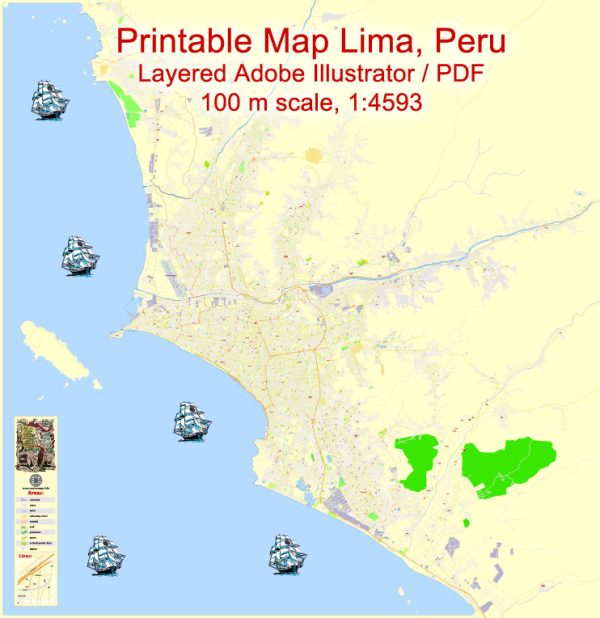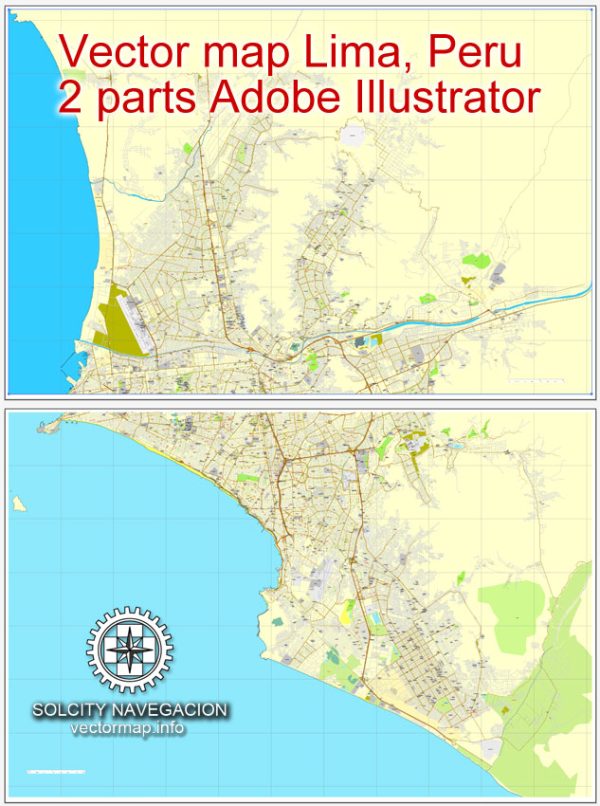Lima, the capital and largest city of Peru, has a rich history of urban development that spans several centuries. The city is located on the central western coast of Peru, overlooking the Pacific Ocean. Here is a brief overview of Lima’s history of urban development:
Pre-Columbian Era:
- Before the arrival of the Spanish conquistadors, the area that is now Lima was inhabited by indigenous peoples, including the Lima culture and later the Ichma culture.
- The Spanish conquistador Francisco Pizarro founded Lima on January 18, 1535, naming it “La Ciudad de los Reyes” (The City of the Kings). Lima became the capital of the Viceroyalty of Peru, a major political and economic center in the Spanish colonial empire.
Colonial Period:
- During the colonial period, Lima underwent significant architectural and urban development. The Spanish colonial architecture, with its baroque and neoclassical influences, left a lasting impact on the city.
- The Plaza Mayor (Main Square) became the heart of the city, surrounded by important buildings such as the Government Palace, the Cathedral of Lima, and the Archbishop’s Palace.
19th Century:
- In the 19th century, Lima played a crucial role in the struggle for South American independence from Spanish rule. It became a focal point for political and social activities.
- The city continued to grow, and new neighborhoods and districts emerged. The development of infrastructure, including roads and bridges, contributed to Lima’s expansion.
Early 20th Century:
- The early 20th century saw the influence of European architectural styles, such as art deco and art nouveau, on Lima’s urban landscape.
- The city experienced population growth and increasing urbanization, with the expansion of neighborhoods like Miraflores and San Isidro.
Mid to Late 20th Century:
- Lima faced challenges related to rapid population growth, leading to the development of informal settlements, or “pueblos jóvenes,” on the city’s outskirts.
- The city’s infrastructure expanded, with the construction of highways, bridges, and public buildings. However, issues of inequality and poverty persisted.
Contemporary Era:
- In recent decades, Lima has undergone modernization and economic growth. The development of the tourism industry, improvements in infrastructure, and the revitalization of historic districts have contributed to the city’s transformation.
- The construction of modern buildings, shopping centers, and cultural spaces reflects Lima’s contemporary urban development.
Challenges:
- Lima faces ongoing challenges, including traffic congestion, air pollution, and issues related to informal settlements. Urban planning efforts seek to address these challenges and promote sustainable development.
In summary, Lima’s history of urban development is a fascinating journey from its colonial roots to a modern metropolis, shaped by cultural influences, political events, and the dynamics of population growth. The city continues to evolve, balancing its rich historical heritage with the demands of a rapidly changing urban landscape.



 Author: Kirill Shrayber, Ph.D.
Author: Kirill Shrayber, Ph.D.